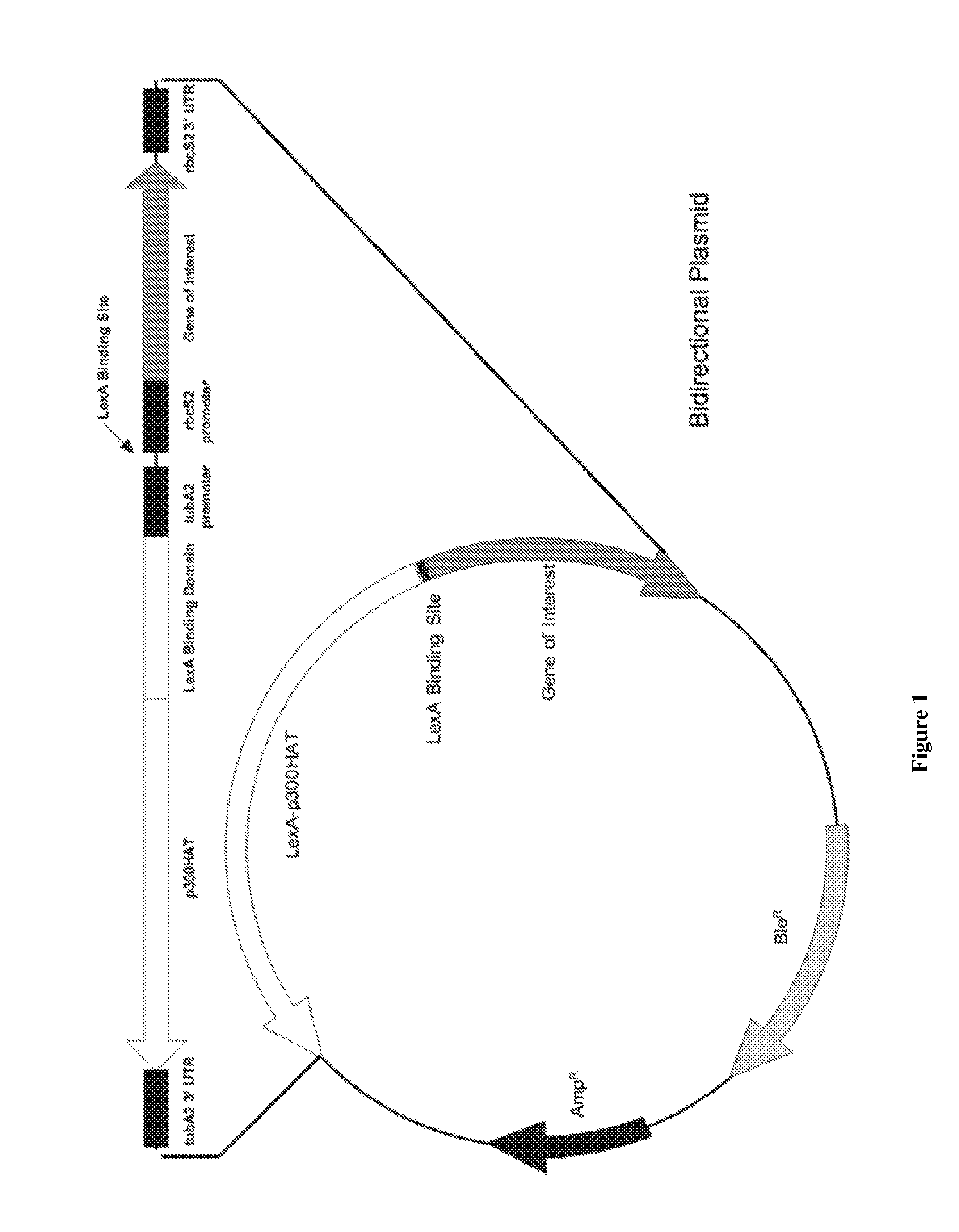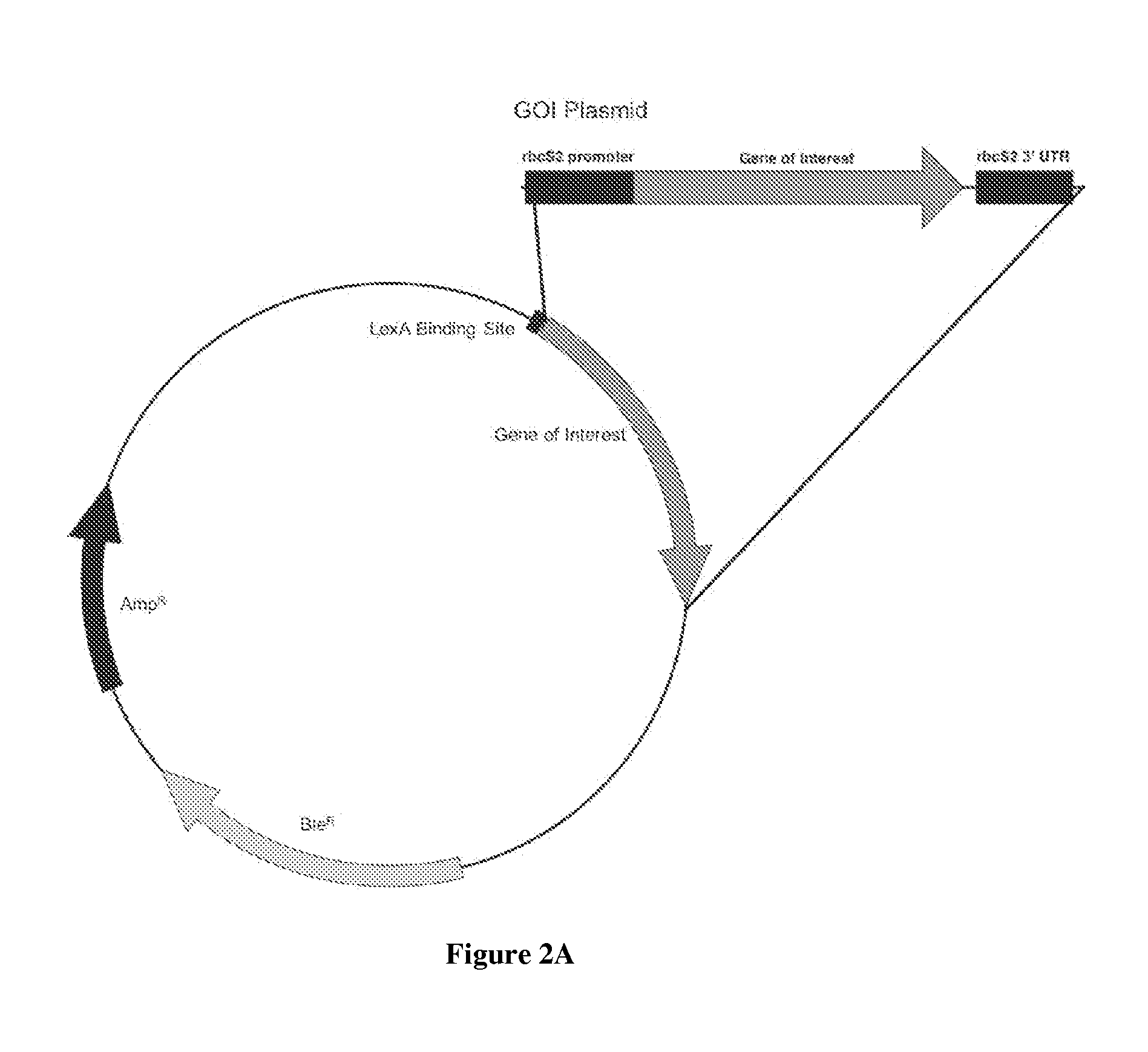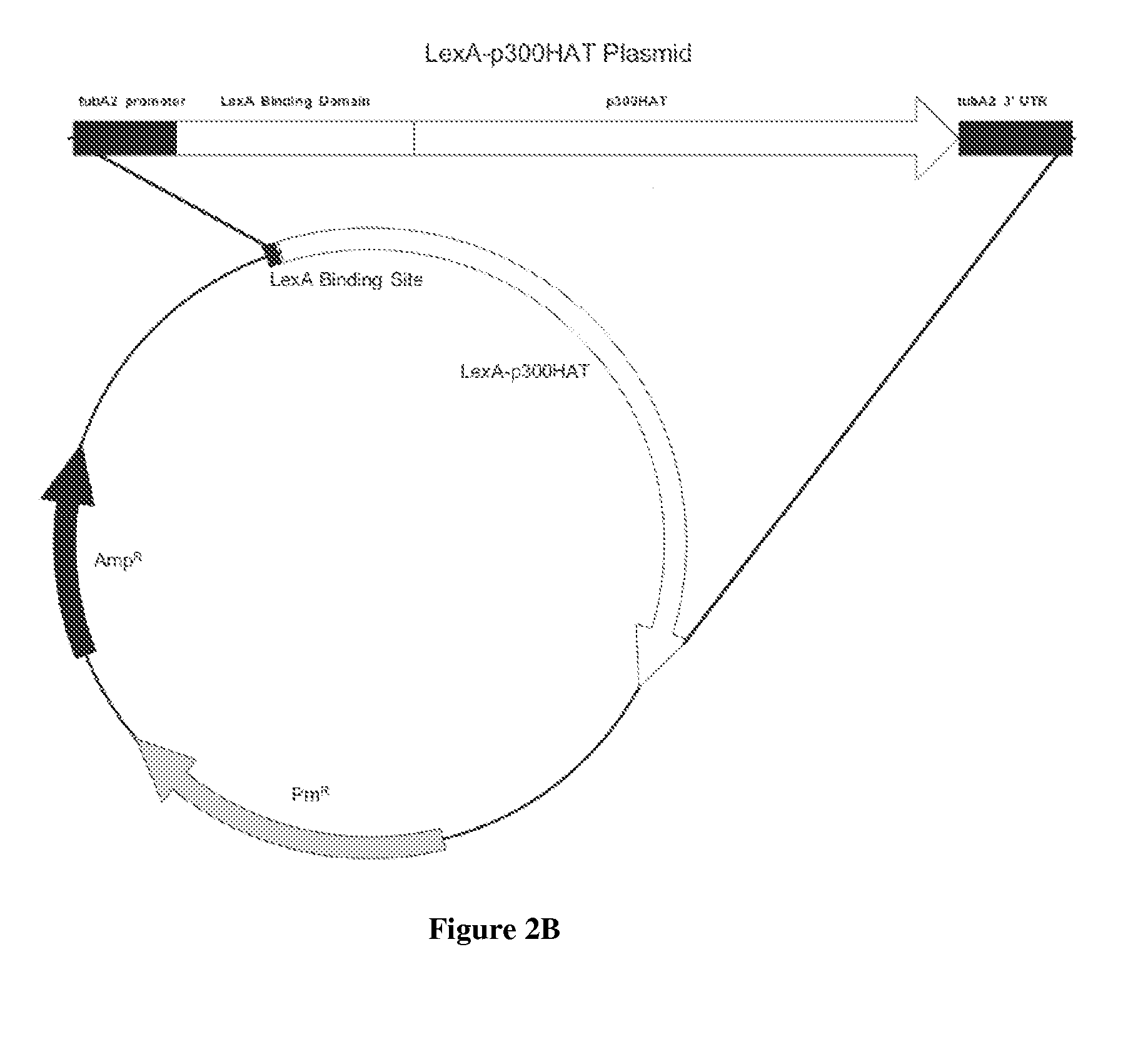Enhanced gene expression in algae
- Summary
- Abstract
- Description
- Claims
- Application Information
AI Technical Summary
Benefits of technology
Problems solved by technology
Method used
Image
Examples
example 1
An Exemplary Vector of the Invention
[0075]FIG. 1 illustrates a construct in accordance to the invention. The starting vector is pSP124. See V. Lumbreras, D. R. S. and S. Purton, Plant J., 14(4):441-447 (1998). Features of the vector are listed in FIG. 1, i.e. the two regions indicated in FIG. 1 to be part of the backbone vector, pSP124.
[0076]None pSP124 sequences are preferably engineered as individual synthetic DNA fragments and strung together via restriction enzyme sites, by well-known techniques. Alternative approaches and mixtures of approaches are available. For example, some features are optionally introduced as PCR products or “cut and pasted” from other available constructs. Typically, sequencing and / or other assays (e.g. size analysis, hybridization) are used to verify the resultant vector.
[0077]As an example, one section of the insert is created by synthesis of a region having a BamHI site and ending with an EcoRI site (“Synthetic—1”). This region provides a transcription...
example 2
Additional Exemplary Vectors
[0081]Two vectors are constructed which are in most respects identical, but for the presence of a GEE unit. The vectors are otherwise the same to each other and similar to the vector of FIG. 2A. The use of these vectors in parallel allows testing of the p300 activity and the role of LexA in otherwise identical genetic backgrounds. The use of two vectors also allows for modulation of the GEE activities by such additional engineering, for example, as addition of other genes, addition of multiple copies of GEE and so on.
[0082]Notably, “LexA BS” does not refer to any limit of the number of binding sites; anything from one BS to many BS are possibly located at the indicated position. Practically speaking, it is unlikely to utilize more than about 8 BS, as benefit from additional sites would be unlikely. Preferably, about 2 to 6 BS are located in the region at or near the 5′ end of genes desirably expressed, more preferably there are 2-4 BS.
example 3
Characterization of GEE Efficacy with a Bidirectional Promoter
[0083]Experiment 1. Use the bidirectional construct with YFP reporter in the position of the GOI and either one of two variants of the GEE construct: [1] in which the LexA-p300 chimeric gene is driven in the opposite direction (FIG. 1) or [2] in which only LexA is driven in the opposite direction which serves as a control.
[0084]Algae are transformed with the two constructs and selected on appropriate antibiotic containing selection media (e.g. media containing bleocin). After selection, 100 colonies from transformation for each construct are chosen to analyze the expression of the YFP transgene by assaying mRNA expression using rtPCR, protein expression with Western blot, and single cell fluorescence by flow cytometry and fluorescent microscopy. The clonal populations are passaged for 2, 4, 6, and 10 generations. The frequency of high-level expression of YFP are compared between the LexA-p300 and LexA only clones. The Lex...
PUM
| Property | Measurement | Unit |
|---|---|---|
| Fluorescence | aaaaa | aaaaa |
| Selectivity | aaaaa | aaaaa |
| Affinity | aaaaa | aaaaa |
Abstract
Description
Claims
Application Information
 Login to View More
Login to View More - R&D
- Intellectual Property
- Life Sciences
- Materials
- Tech Scout
- Unparalleled Data Quality
- Higher Quality Content
- 60% Fewer Hallucinations
Browse by: Latest US Patents, China's latest patents, Technical Efficacy Thesaurus, Application Domain, Technology Topic, Popular Technical Reports.
© 2025 PatSnap. All rights reserved.Legal|Privacy policy|Modern Slavery Act Transparency Statement|Sitemap|About US| Contact US: help@patsnap.com



